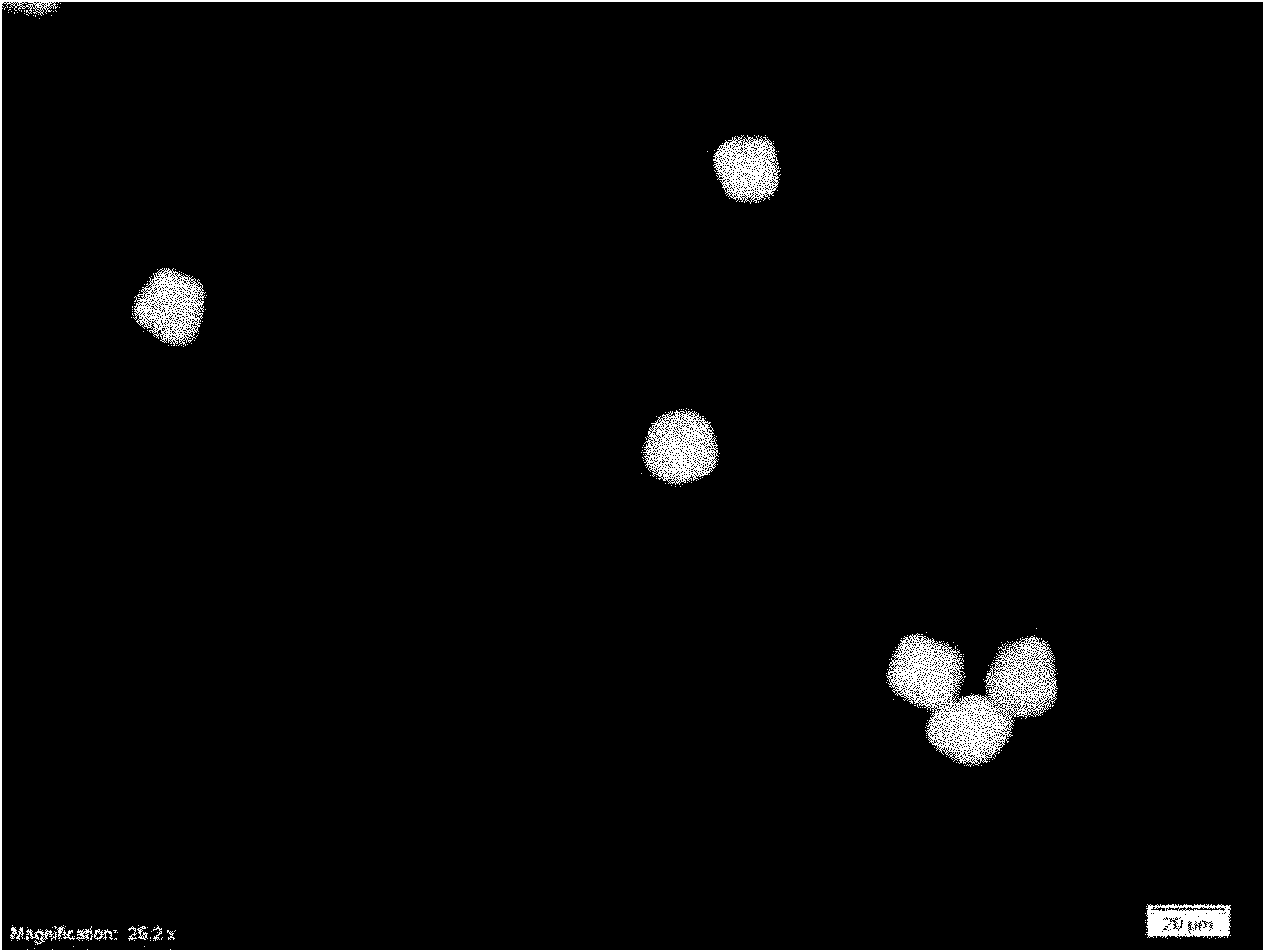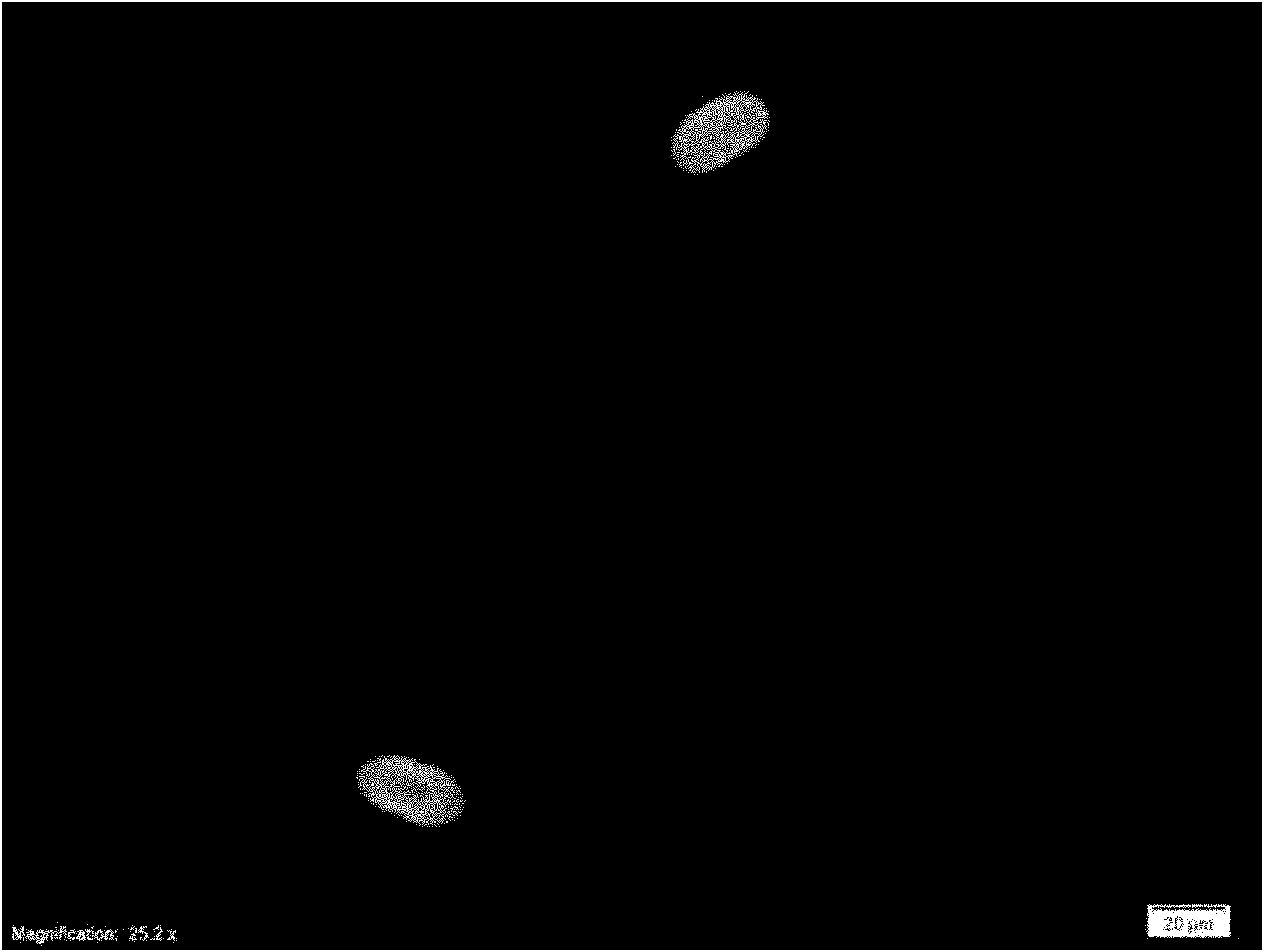Monoclonal antibody, immune fluorescence method and kit for detecting puccinia striiformis f.sp.tritici, puccinia triticina f.sp.tritici and puccicinia graminis f.sp.tritici
A monoclonal antibody, immunofluorescence technology, applied in the field of agricultural biology, can solve the problem of low degree of instrumentation
- Summary
- Abstract
- Description
- Claims
- Application Information
AI Technical Summary
Problems solved by technology
Method used
Image
Examples
Embodiment 1
[0038] Embodiment 1: the propagation of wheat leaf rust
[0039] According to the current prevalence of wheat rust in China, the present invention selects the main popular races PHT and THT of wheat leaf rust as experimental materials, and conducts identification and mass propagation in the high-temperature chamber of the Institute of Plant Protection, Chinese Academy of Agricultural Sciences.
[0040] Specific steps are as follows:
[0041] 1. Plant Zhengmai 5389, a susceptible variety of wheat leaf rust, and inoculate with PHT and THT when the second new leaf grows.
[0042] 2. Spray the wheat leaves with a small watering can filled with clean water before inoculation. After the hands of the operator are disinfected with alcohol, dip in clean water and gently wipe off the wax paper layer on the leaves. On the leaves, wipe back and forth several times to evenly spread.
[0043] 3. After wiping the rust, the hands of the experimenter are first rinsed with 70% alcohol, and th...
Embodiment 2
[0048] Embodiment 2: wheat leaf rust fungus immune mice
[0049] 1. Collect freshly multiplied spores of two kinds of wheat leaf rust fungus, count them under a microscope, weigh 0.15 mg each of wheat leaf rust fungus PHT and THT uredospores (5×10 5 spores / mg), add 675 μl normal saline and 675 μl Freund’s complete adjuvant (US Sigma Company, product number F5881), put them into the syringe, connect the two syringes, push back and forth to mix well to obtain the emulsified antigen.
[0050] 2. Take female Balb / C mice aged 4-8 weeks, and take 200 μl of emulsified antigen to immunize by subcutaneous multi-point injection. After 3 weeks, the uredia spore suspension was mixed and emulsified with Freund's incomplete adjuvant, and after 3 weeks, the Freund's complete adjuvant (product number F5506) was used instead of Freund's complete adjuvant and the bacterial solution was mixed and emulsified according to Immunization was carried out with the same dose and method, and subsequent ...
Embodiment 3
[0058] Example 3: Screening of wheat leaf rust hybridoma cell line and preparation of monoclonal antibody
[0059] Take the mouse with higher serum titer in Example 2, boost immunization with 150 μl of the uredospore suspension in Example 2, take the mouse spleen and carry out cell fusion with myeloma cells after 5 days, and screen by "two-step screening method" Positive clones, at the same time, for the cells detected in the positive wells of specific antibodies, they were transplanted and cloned in time. The "limiting dilution method" is used for the cloning of hybridoma cells. The cell suspension is serially diluted to statistically contain only a single cell in each well, and then inoculated into a culture plate, so that a single cell can be propagated to form a homogeneous cell clone. , when there are multiple positive cells, try to take single clone wells for re-cloning, transfer them to 24-well plates, and then transfer them to culture flasks for expanded culture until ...
PUM
| Property | Measurement | Unit |
|---|---|---|
| Sensitivity | aaaaa | aaaaa |
Abstract
Description
Claims
Application Information
 Login to View More
Login to View More - R&D
- Intellectual Property
- Life Sciences
- Materials
- Tech Scout
- Unparalleled Data Quality
- Higher Quality Content
- 60% Fewer Hallucinations
Browse by: Latest US Patents, China's latest patents, Technical Efficacy Thesaurus, Application Domain, Technology Topic, Popular Technical Reports.
© 2025 PatSnap. All rights reserved.Legal|Privacy policy|Modern Slavery Act Transparency Statement|Sitemap|About US| Contact US: help@patsnap.com



